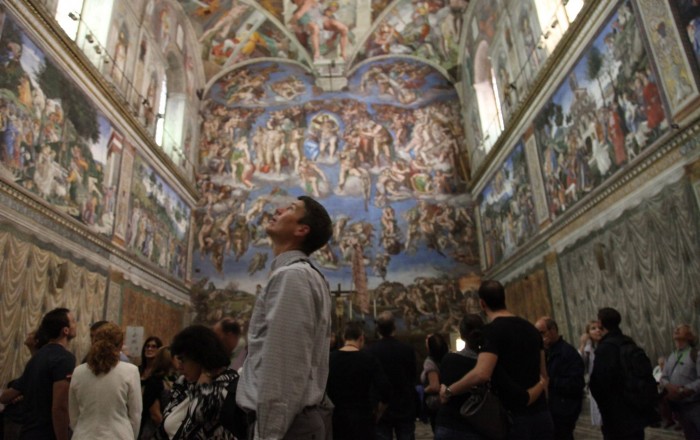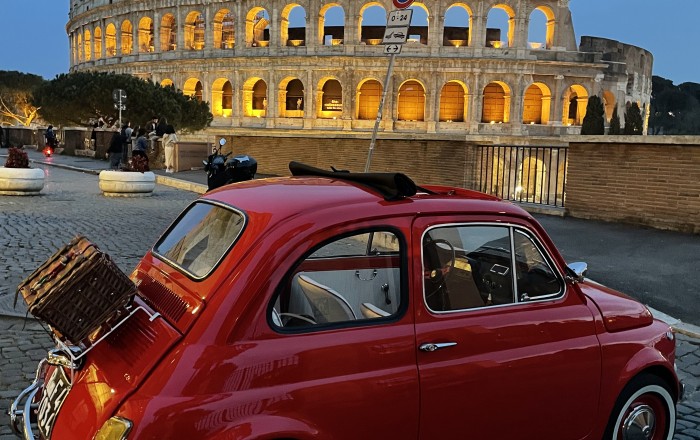Duration:2/3 hours tour
Private tour:On Request
Difficulty:
Tour overview
Beneath one of the most famous squares in Rome, lie the remains of what was the first masonry stadium in the city. Strongly desired by the emperor Domitian who wanted to introduce the sporting agonists of Greece into Rome, the stadium measured 275 meters in length and 106 in width and could hold about 30,000 spectators. The games were called agones, and the name of the square from "agones" in the Middle Ages became "agone," "nagone," "Navone" and finally Navona. However, It has nothing to do with the naval battles often referred to an explanation of the name.
Our guided tours will illustrate how the stadium at the origin and the subsequent transformations had to appear until the result that today we can all admire. We will show you this through the use of models and graphic reconstructions. Thanks to the brilliant intervention of artists such as Francesco Borromini and Gian Lorenzo Bernini and the love for the art of great popes like Innocent X Pamphili.
Risen Christ by Michelangelo
In 1514, Michelangelo wanted the sculpture to be specified in the contract: Christ had to be naked, entirely. The current version is with bronze drapery arises from prudery as the need to hide sex, damaged by a madman. This is the only work by Michelangelo that exists in two versions.
The first version was abandoned without completing it, because a "hair" appeared right on the face, disfiguring the work. Michelangelo had used one of the blocks of the quarry of Polvaccio, in Carrara, initially planned for the tomb of Julius II. It is the same marble used for the statues of Lia and Rachele, in San Pietro in Vincoli. That shining marble had to render the metaphysical splendor of a body not only beautiful but resurrected. The cross instead was made from proconnesian marble, darker and veined, to evoke the object-matter that is opposed to the spirit-body.
Christ is depicted standing against a cross (symbolic, without the dimensions of that of martyrdom). While he also holds the cane and the sponge with which the vinegar was brought and with the face looks in the opposite direction. The body, with its perfect anatomical shape, was initially been nude entirety. The gilded bronze drapery was added only after the Council of Trent. The pose is hugely studied, with a sophisticated but compelling twist that shows Michelangelo's constant search for new compositional solutions.
Jewish Ghetto
The ghetto identifies the Jewish quarter, the place where the inhabitants of the Jewish religion were confined, following the enactment of laws and restrictive decrees. The first Italian ghetto was born in Venice. Initially it was the district where the copper foundries were located, in 1516 the government of the Serenissima Republic of Venice imposed on the Jews who lived in the city to settle in the Ghetto. The Venice Ghetto was expanded in the following years to accommodate an ever-increasing number of inhabitants. The neighborhood was open during the day as it was closed from dusk to dawn. The Ghetto carried out its function until 1797, the year of the fall of the Most Serene Republic of Venice. The example of the Venice Ghetto was also taken up by other Italian and European cities.
The Capitoline Hill
Skip the line
Optimize your time with the Skip the Line access to all the archeological sites.
Best local guides
Hear the stories & insights that bring ancient Rome to life from your expert, local guide.
360° experience
Experience the imperial era and discover overlooked sights of Rome along the way.
Price from
65 €
 You might also like...
You might also like...

250 € per person

Experience one of the most exclusive and intimate tours of the Vatican with this 2,5-hour walking tour, when the museum is at its emptiest.
150 € per person

Explore Rome in style as you ride around all the must-see sights in your very own vintage 500 FIAT.
Copyright 2018 Eden Walks
Eden Walks is Part of Follow Me Tour
Website made by Rekuest Web Agency